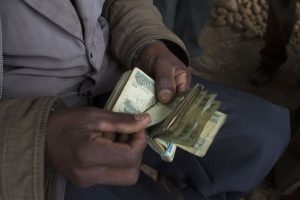Despite newfound optimism, clouds gather over Latin America’s future
Market dynamics are posing challenges to Latin America’s economies that look eerily like those that triggered major crises in the past, writes José Martinez Sanguinetti, who manages a $3.5 billion global portfolio as chief investment officer at Rimac Seguros.

Cracking down on antigovernment protesters, Lima, Peru, November 2022
Sebastian Castaneda / Reuters
Slowing global growth, a likely recession in the US and the ongoing impacts of the pandemic and Russia’s war on Ukraine are darkening the prospects for Latin America in 2023. With potentially difficult local conditions adding to the shock, the region is heading for the most challenging environment it’s seen in many decades.
The numbers are startling: The IMF expects Latin America’s GDP growth rate to plunge from 3.5% in 2022 to 1.7% in 2023. The five most representative economies in the region—Brazil, Mexico, Chile, Colombia and Peru—are likely to see their growth rates halved, Chile and Mexico may experience fully fledged recessions.
Worryingly, the mechanisms through which slower global growth will undermine Latin America’s economic wellbeing are the same that caused major financial crises in the region in the past. In the 1980s and 1990s, a combination of higher interest rates, lower commodity prices and high payment obligations on foreign debt caused currency and balance of payments crises. Although the stronger economies in the region are today in much better shape to deal with these conditions, their unprecedented dependence on exports could trigger a similar crisis.
With exports accounting for 27% of GDP, Latin America is vulnerable to the expected growth slowdown in its main trading partners, the US, China and the EU, which would likely trim export volumes.
Adding to its high dependence on foreign demand is the fact that its exports are concentrated in raw materials and basic staples. Its main three exports are oil, copper and soybeans. These, along with other metals and agricultural products amount to 31% of total exports.
If exports of goods in the early stage of the production process to become consumer goods are added, they make up nearly 50% of total exports. The prices of raw materials and the like are highly sensitive to variations in foreign demand and tend to fall substantially in times of recession.
A vicious circle
Lower export volumes and prices would add considerable pressure on the balance of payments of Latin American countries, some of which already have large current account deficits. Chile and Colombia are set to end 2022 with current account deficits of over 5% of GDP. Peru, Panama, Paraguay and Nicaragua will register deficits over 3% of GDP.
In 2023, lower oil and food prices are likely to weaken the current accounts of Mexico, Brazil and Ecuador. Though these countries have been able to finance deficits with foreign capital inflows in the past, foreign capital is likely to become less available as higher interest rates outside the region and higher risk premiums in developed markets make Latin America’s risk return-balance relatively less attractive.
There is little that monetary policy can do to support domestic demand in the face of these shocks. Chile and Brazil have already announced their intention to halt interest rate increases and some other countries like Peru, Mexico and Colombia, seem to be close to reaching that point. But any attempt to adopt a more expansionary stance on liquidity while interest rates continue rising in developed markets is likely to undermine local currencies. The devaluation of the currency would hit domestic demand and counteract any positive impact resulting from lower interest rates.
The scope for fiscal policy is also limited considering the relatively high levels of debt that the region’s governments have already built up. Although a few countries, such as Chile and Peru, have very low debt ratios, these are increasing. The local debt markets in these two countries are set to shrink substantially as a result of the dismantling of their successful private pension systems in the next few years.
Foreign debt begets vulnerability
This will force these countries to use the foreign debt market more intensively and, as foreign debt grows, their vulnerability to external shocks increases. This was the reason why Fitch ratings recently changed its stance on Peru’s sovereign debt rating from stable to negative. Countries including Brazil and Colombia have already lost their investment-grade ratings due to higher debt-to-GDP ratios.
Fiscal deficits are also on the rise in the region. According to the IMF, in 2023 the overall fiscal deficit-to-GDP ratio in the region will rise from the already high 4.6% of 2022. This means that the need for financing will be rising while the supply of funds becomes scarcer.
Slower growth, external deficits, higher debt and less foreign investment paint a gloomy picture that poses a major challenge to policy makers in the region. Their ability to envisage the right kind of policies though, is blurred by polarized politics and conflict.
Most countries in Latam have split governments—the opposition controls one or all the houses of congress—and polarization makes finding common ground very difficult.Since the pandemic, many Latin American countries have moved left, but dealing with the harsh conditions of 2023 will require a more pragmatic approach to policy: more fiscal discipline, less debt, better business environments and less populism are urgently needed.






